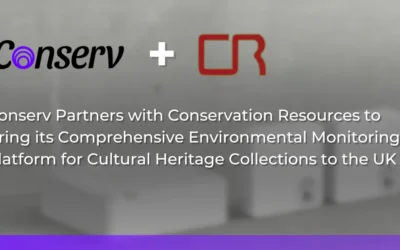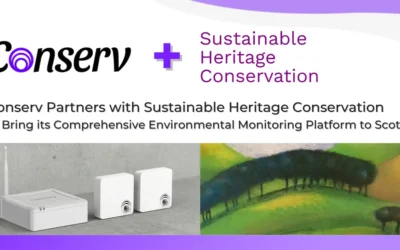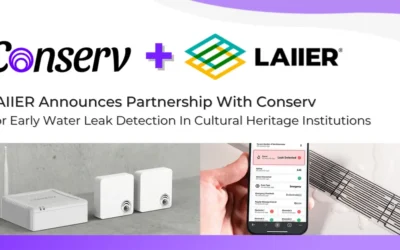If you work in a small museum, gallery, or heritage site, you may have encountered the challenge of creating an art loan agreement for the first time. An art loan agreement is a legal document that outlines the terms and conditions of lending or borrowing an artwork or a collection of artworks. It will cover important aspects such as the duration of the loan, the responsibilities of both lender and borrower, the insurance and transportation arrangements, the conservation and display requirements, and the rights and obligations of both parties.
An art loan agreement is essential for ensuring the safety and security of the artworks, as well as protecting the interests and reputation of the institutions involved. It also helps to prevent misunderstandings and disputes that may arise during or after the loan period. However, creating an art loan agreement can be daunting, especially for small institutions that may not have the resources or expertise to draft one from scratch.
Fortunately, you don’t have to start from scratch at all. There are some examples and templates of art loan agreements that can serve as a starting point or a reference for small institutions. In this article, we will share five examples of art loan agreements from reputable sources in the field of heritage conservation. These examples can help you to understand the structure and content of an art loan agreement, as well as to adapt it to your specific needs and circumstances.
Example 1: Library and Archives Canada (LAC)
This document by the Library and Archives Canada (LAC) is not strictly an art loan agreement, but rather a loan request guideline which includes general terms that a borrower must understand before even requesting a loan. This is extremely useful as it can save you a lot of trouble if people can read the information demanded by the agreement before they even make their request! It contains a lot of information that will be found in the final art loan agreement and which you may use as a base for your own documents. An important piece of information you can see at the very top, for example, is the general lead time for loan requests. Consider having some of those yourself too just so you can work within timelines that are appropriate for your institutional workflows.
This model covers various important aspects of an art loan agreement. For example:
- Eligibility: Who are you willing to loan to and for what purpose? Which times of the year are blocked off for loans? Which objects are eligible or loans?
- Costs: Who will pay for what and when? Who will determine which vendors have to be used for any particular service?
- Insurance information: What kind of insurance information is necessary?
- Environmental standards: What are the environmental monitoring requirements for the collections being requested? What kind of environment can you prove you’ve had for the past year? You can read this other article we wrote on art loan agreements and environmental monitoring.
- Exhibition information: What is it called? Where will it happen? Will there be a publication or catalog for it?
- Objects: Which objects are you asking for?
- Exhibition environment: Floor plans, display methods, display designs, timelines, lighting plans, labels, etc.
Example 2: National Museum of American History
Here is a straightforward PDF download example of a sample loan agreement (version from 2017) by the National Museum of American History. There are 7 pages of requirements and legally-binding obligations which you should be sure to read with care. If you are a small institution, you may be able to do away with some of the nitty-gritty details of this kind of document, which is most appropriate for a large museum. Nonetheless, most of the clauses present will probably be there after having had some sort of past experience, so remember that many of the documents you will find have probably been tweaked over time to address real events.
At Conserv, we are most interested in the environmental condition and light levels section, which you can find on page 6 of the document. There are very specific guidelines for temperature and relative humidity as well as limits on light levels, natural light, UV, and even where the lighting for the exhibit cases must come from.
This is a very important factor when you are thinking about either requesting or lending out objects for loans. If you are borrowing objects, remember that art loan agreements will expect you to make your requests up to several years in advance and may also expect at least one full year of environmental data for the space where you intend to display the objects. This means that if you are not monitoring at the moment, but you intend to start looking into loans soon, you will need to get a preventive care program set up as soon as possible.
Example 3: Museums Association
If you thought the 7 pages in the previous PDF was long, here are 47 pages from the Simple Loans Administration document by the Museums Association (UK). As they state in the introduction to the document, “This guidance has been produced as part of Effective Collections, a programme of work from the Museums Association to increase the number of long loans from stored museum collections. The information in the following pages is designed to help museums to create straightforward loan agreements.”
An aspect we really like about this document is that they address the fact that everybody has their own Loans In and Loans Out document. This means that you have to fill in everyone’s documentation on their own terms, and this exercise can introduce gray areas, confusion and ambiguity in documents that really ought to be completely clear about responsibilities.
Another key aspect for collections care is what is mentioned on page 10 of this document about some optional loan conditions. Borrowers could ask for very specific information about materials required for mounting and displaying objects, or even could ask for specific types of gloves you need to use to manipulate the objects. For guidance on the information needed for display cases you can find more information in the Display Case Supplement by the UK Registrars Group.
If you are starting loan documentation for the first time, make sure you give this document a read. Unless absolutely necessary, try not to introduce unusual fields or information that is not standard in the agreements of the colleague institutions you intend to work with. If you have specific ideas on what objects you wish to borrow/lend and to/from whom, then you may consider approaching that specific institution first so you can develop an art loan agreement that works seamlessly between you.
Make sure you check out this document all the way to the end, as they have example art loan agreement documents from the National Portrait Gallery, the UK Registrars Group (UKRG), and the Network of European Museum Organisations (NEMO). By the way, if you are interested, NEMO also has a document specifically on Lending to Europe!
Example 4: Library of Congress
Similar to the information by the Library and Archives Canada, the Library of Congress also has a web page with details on loan procedures for institutions and loan requests. Once again, the LOC expects to receive loan requests at least 9 months before the opening of your intended exhibition, so you can see defining time frames in your art loan agreement is key to success.
We really like this particular example for libraries because the objects are generally different from museum collections. For requested objects such as books or multipage documents, they want to know which page or side you will be displaying, exactly. This makes sense as it relates directly to the light exposure that particular page will be receiving compared to other pages of the book.
Example 5: Smithsonian Institution
Due to the sheer size of The Smithsonian Institution, which is composed of a group of museums, research centers, and cultural organizations administered by the United States government, if you try to find a single loan agreement for objects, you will find instead that each individual member institution has its own.
For example, even just within the National Museum of Natural History there are different agreements which differ depending on which department or division you would like to work with. Depending on whether you wish for a loan from paleobiology, mineral sciences, anthropology, botany, entomology, invertebrate zoology, fishes, amphibians & reptiles, birds or mammals, you will have to address yourself to that particular section of the institution. If you have similar types of collections, we recommend you start here! We found the links for you for the preliminary loan request forms, conditions for exhibitions and conservation/exhibition guidelines for loans from the anthropology department.
Other examples you can use to create your own art loan agreement if you have different types of collections are:
- Artifact Loan Procedures and Requirements by the National Air and Space Museum
- Requests for Loans from the Collection by the National Museum of African Art
Bonus!
If you are still new to the loans world and would prefer to read up a bit more on the topic before even embarking on attempting to create loan paperwork, don’t miss this resource by the National Museum Directors Council (NMDC) from the UK on the principles for lending and borrowing.
Conclusions
An art loan agreement is a vital document for any institution that is involved in lending or borrowing artworks. It helps to ensure the safety and security of the artworks, as well as to protect the interests and reputation of both parties. However, creating an art loan agreement can be challenging for small institutions that may lack the resources or expertise to do so. We hope the resources we have shared here help you as you create or update your own. If you are still unsure, don’t forget we have an open community where you can ask your questions to other preservation professionals.
If you have any questions about environmental monitoring, integrated pest management, or just want to talk about preventative conservation, please reach out to us! Don’t forget to check out our blog or join our community of collections care professionals where you can discuss hot topics, connect with your peers or even take a course to get familiar with the Conserv platform.




